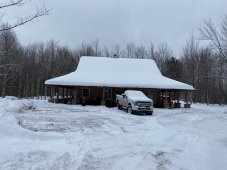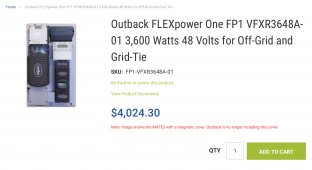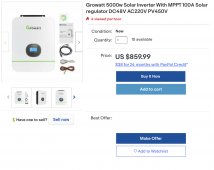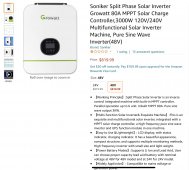San Felipe BC
New Member
- Joined
- Aug 31, 2021
- Messages
- 54
Short background: We have an off grid home in San Felipe BC my brothers and I are taking over expenses for. It seems like we’ve heard our dad fussing about power usage for 30 years and we want to put that to bed. The system is 12 volt with, I believe, 6 panels on the roof. My dad says we have 60 amps coming off the roof. During his last visit, July 2021, he purchased 8 new batteries, so they’re taken care of. The inverter is 1500 watts and is dying a slow death so I need to replace it, along with the charge controller, which is a 60 amp.
The kicker is I need to buy new components before traveling to Mexico from Virginia in late September. From the resources page, which is awesome by the way, I think I need about a 2500 watt inverter but I’d like to get one that’s 4000 watts. I’m also planning to add 2 more panels so the new charge controller needs to be 80 amp?
As you can tell this is an odd situation. My questions are:
1) Do my assumptions about the controller and inverter make sense?
2) I see inverters on line ranging from a few hundred bucks to a thousand. Please help
3) With a new inverter do I need a new breaker box?
4) Can I install these components myself?
5) Should I replace any of the wiring between the panels and the controller or inverter?
6) Should the controller and inverter be the same brand?
Can’t thank y’all enough
Steven
The kicker is I need to buy new components before traveling to Mexico from Virginia in late September. From the resources page, which is awesome by the way, I think I need about a 2500 watt inverter but I’d like to get one that’s 4000 watts. I’m also planning to add 2 more panels so the new charge controller needs to be 80 amp?
As you can tell this is an odd situation. My questions are:
1) Do my assumptions about the controller and inverter make sense?
2) I see inverters on line ranging from a few hundred bucks to a thousand. Please help
3) With a new inverter do I need a new breaker box?
4) Can I install these components myself?
5) Should I replace any of the wiring between the panels and the controller or inverter?
6) Should the controller and inverter be the same brand?
Can’t thank y’all enough
Steven









